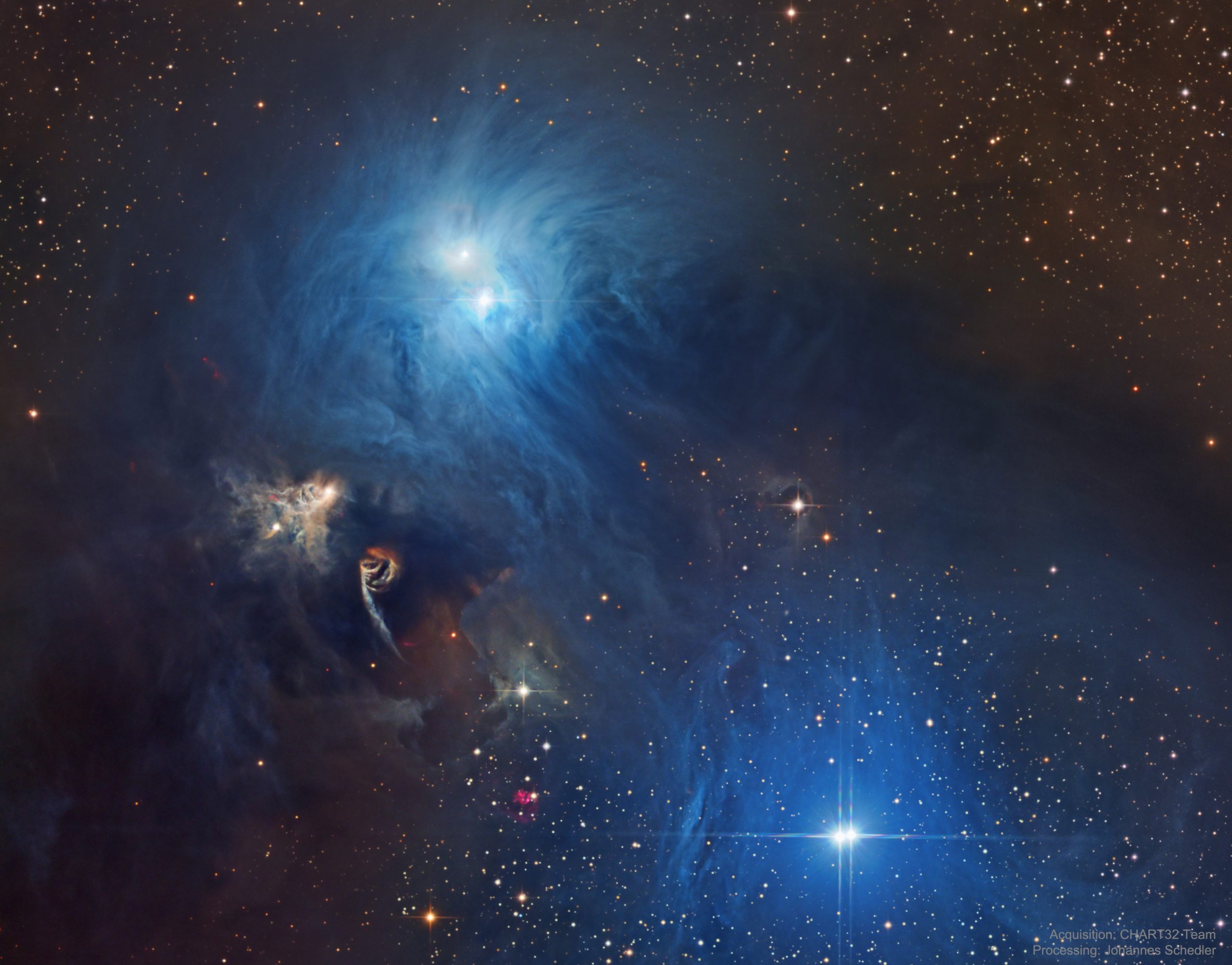2020 January 12
Stars and Dust in Corona Australis
Image Credit & Copyright: CHART32 Team, Processing – Johannes Schedler
Explanation: Cosmic dust clouds and young, energetic stars inhabit this telescopic vista, less than 500 light-years away toward the northern boundary of Corona Australis, the Southern Crown. The dust clouds effectively block light from more distant background stars in the Milky Way. But the striking complex of reflection nebulae cataloged as NGC 6726, 6727, and IC 4812 produce a characteristic blue color as light from the region’s young hot stars is reflected by the cosmic dust. The dust also obscures from view stars still in the process of formation. At the left, smaller yellowish nebula NGC 6729 bends around young variable star R Coronae Australis. Just below it, glowing arcs and loops shocked by outflows from embedded newborn stars are identified as Herbig-Haro objects. On the sky this field of view spans about 1 degree. That corresponds to almost 9 light-years at the estimated distance of the nearby star forming region.
南冕座的恒星和尘埃
影像提供与版权:CHART32 Team , Processing – Johannes Schedler
说明: 这幅望远镜视野呈现的泛蓝尘埃云和活跃年轻恒星,位在南冕座的北缘,距离我们不到500光年远。这些尘埃云,几乎完全遮掉了后方银河系背景恒星的星光。不过,在编录号为NGC 6726、6727、和IC 4812的反射星云复合体里,尘埃反射此区域年轻炽热恒星的星光,造就其鲜明泛蓝的特征色泽。此外,这些尘埃也遮住还处在诞生阶段的恒星。这片星云左方的泛黄小星云NGC 6729,折绕在年轻的南冕座R变星周围,它下方的弧状和圈状光弧,则是内部新恒星外泛物质所造成的赫比格-哈罗天体。这片星野在天空中的跨幅约1度,依这个邻近恒星形成区的距离来估算,其宽度将近有9光年。



